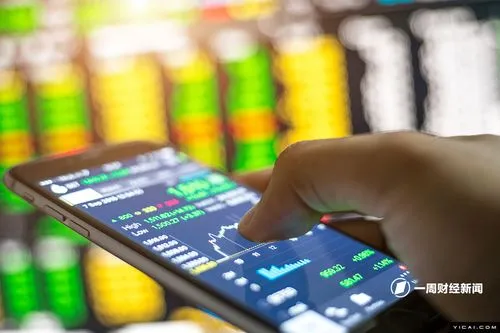Paris Bank Predicts US Dollar Parity with Euro by 2025: A Deep Dive into Economic Forecasting
Meta Description: Paris Bank's 2025 outlook predicts rising US Treasury yields and dollar-euro parity, driven by inflation and Fed policy. Explore the detailed analysis and implications. Keywords: Paris Bank, US Treasury yields, Dollar-Euro parity, Inflation, Federal Reserve, Economic Forecasting, 2025 Economic Outlook
Let's face it, predicting the future is a risky business. Crystal balls are notoriously unreliable, and even the most seasoned economists can get it wrong. But that doesn't stop us from trying, does it? Paris Bank's bold prediction of US dollar-euro parity by 2025, coupled with their forecast of rising US Treasury yields, has sent ripples through the financial world. This isn't just another "analyst's take"—this is a significant projection from a major institution, demanding a closer look. Their report doesn't just offer a simple prediction; it delves into the intricate web of economic factors, from the lingering impact of Trump-era tariffs to the delicate balancing act of the Federal Reserve. This in-depth analysis will dissect their claims, examining the supporting evidence, exploring potential pitfalls, and ultimately, helping you make sense of this complex economic forecast. Prepare to unravel the mysteries surrounding this bold prediction and gain invaluable insights into the potential trajectory of the global economy. We'll explore the underlying assumptions, assess the potential risks, and consider alternative scenarios. Get ready for a rollercoaster ride through the world of macroeconomics!
US Treasury Yields: The Rising Tide
The core of Paris Bank's prediction hinges on a projected rise in US Treasury yields. This isn't simply a guess; they base this on their anticipated increase in inflation. They argue that the lingering effects of Trump-era tariffs, coupled with other factors, will fuel inflationary pressures in the US economy, starting mid-2024. This, in turn, will force the Federal Reserve (the Fed) to maintain interest rates higher than currently anticipated, hovering around 4.25% - 4.5% throughout the year. Higher interest rates usually lead to higher bond yields, as investors demand a greater return for lending their money at a time of higher risk. This interconnectedness is crucial to understanding the rationale behind the entire forecast.
This isn't a new phenomenon; we've seen this dance between inflation, interest rates, and bond yields play out many times in history. However, the specifics of this scenario, the timeline, and the magnitude of the projected changes are what make this forecast particularly interesting and, frankly, slightly controversial. Many economists argue that the inflation scenario is too optimistic or that the Fed might react differently to such changes. The devil, as they say, is in the detail, and we will delve into those specifics later.
The report also touches upon geopolitical factors, which are always a wildcard in economic forecasting. While not explicitly stated, the ongoing global instability and potential for further economic shocks undoubtedly influence their projections. Consider, for instance, the ripple effects of the ongoing war in Ukraine, or the potential for further supply chain disruptions. These factors could either bolster or weaken the prediction depending on how they unfold.
Dollar-Euro Parity: A Bold Claim
The prediction of dollar-euro parity by 2025 is perhaps the most headline-grabbing aspect of Paris Bank's report. This suggests a significant weakening of the US dollar relative to the euro. This is directly linked to the anticipated rise in US Treasury yields. Higher yields make US dollar-denominated assets more attractive to foreign investors, potentially leading to increased demand for the dollar. However, the report suggests that this effect will be offset by other factors, leading to a gradual decline in the dollar's value against the euro.
This aspect of the forecast is particularly contentious. Many analysts believe that the eurozone faces its own set of economic challenges, including high inflation and potential energy shortages. These factors could weaken the euro, potentially counteracting the predicted decline in the dollar. The interplay of these competing forces makes the parity prediction a high-stakes gamble. It's a fascinating battle of economic forces, and the outcome is far from certain.
It’s also worth noting that unforeseen events, like a global recession or a major geopolitical crisis, could significantly alter the trajectory of currency exchange rates. Therefore, taking this prediction as gospel would be unwise. It's more valuable as a potential scenario, prompting us to carefully consider the underlying factors and their potential impact on our financial decisions.
Factors Influencing the Forecast: A Critical Analysis
Several key factors underpin Paris Bank's forecast. These factors are interconnected and influence each other, creating a complex web of cause and effect. Let's break them down:
-
Inflationary Pressures: The report emphasizes the role of lingering inflationary pressures stemming from past trade policies. While the effects of these policies are still debated, the potential for inflationary pressures is undeniable.
-
Federal Reserve Policy: The Fed's response to inflation will be pivotal. Their reaction—the rate hikes and their duration— directly impacts Treasury yields and the dollar's value.
-
Geopolitical Risks: Global instability adds uncertainty. Unforeseen events could significantly affect both the US and European economies, altering the predicted trajectory.
| Factor | Impact on US Treasury Yields | Impact on Dollar-Euro Parity |
|----------------------|-----------------------------|-----------------------------|
| Rising Inflation | Increase | Decrease (potentially) |
| Fed Rate Hikes | Increase | Decrease (potentially) |
| Geopolitical Risks | Uncertain | Uncertain |
Frequently Asked Questions (FAQs)
Q1: How reliable is Paris Bank's forecast?
A1: While Paris Bank is a reputable institution, economic forecasting is inherently uncertain. This forecast should be viewed as a potential scenario, not a guaranteed outcome. Several unforeseen events could dramatically alter the projected trajectory.
Q2: What are the potential risks associated with this forecast?
A2: Key risks include unexpected shocks to the global economy, unpredictable shifts in Federal Reserve policy, and the potential for unforeseen geopolitical events.
Q3: How might this forecast impact investment strategies?
A3: Investors should carefully consider this forecast's implications when making investment decisions. It could affect currency trading, bond investments, and other asset allocations. Diversification remains key.
Q4: What other factors could influence the dollar-euro exchange rate?
A4: Factors beyond those cited in the report, such as changes in energy prices, shifts in global trade patterns, and unexpected technological advancements, can all influence the exchange rate.
Q5: Is this forecast universally accepted by economists?
A5: No, this forecast is not universally accepted. Many economists hold differing views on the likely trajectory of inflation, interest rates, and currency exchange rates.
Q6: Where can I find more information on this topic?
A6: You can find more information by consulting reputable financial news sources, economic journals, and reports from other financial institutions. Remember to critically evaluate all sources.
Conclusion
Paris Bank's 2025 outlook presents a bold and intriguing view of the future economic landscape. Their prediction of rising US Treasury yields and dollar-euro parity, while thought-provoking, is not a guaranteed outcome. The interplay of inflation, Federal Reserve policy, and geopolitical risks creates a complex and unpredictable environment. This analysis serves as a starting point for understanding this forecast, prompting further investigation and careful consideration of its implications. Remember, in the world of economics, flexibility and adaptability are key. Stay informed, stay vigilant, and always keep a healthy dose of skepticism handy. This isn't just about numbers; it's about navigating the ever-shifting sands of global finance.



